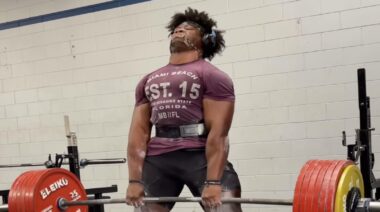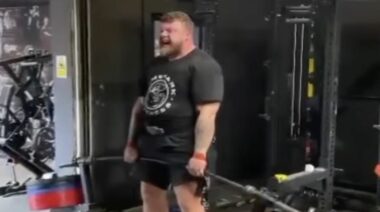The squat is often referred to as “the king of the gym lifts”—for good reason, too. A correctly performed barbell squat utilizes virtually every muscle in the body.1 If you want to get stronger, squats will help. If you want to get bigger, squats will help. If you want to lose weight, squats will help. As such, most good programs will include the squat.
The squat is often referred to as “the king of the gym lifts”—for good reason, too. A correctly performed barbell squat utilizes virtually every muscle in the body.1 If you want to get stronger, squats will help. If you want to get bigger, squats will help. If you want to lose weight, squats will help. As such, most good programs will include the squat.
So why would anyone need an alternative to the barbell squat? Well, there are a couple of reasons. You may have noticed previously that I referenced “a correctly performed barbell squat.” A quarter squat in a Smith machine does not fit this description, sorry. As important as the squat is as an exercise and movement pattern, no other exercise is performed as badly by so many.
The squat requires movement at the hip, knee, and ankle at the same time.2 Anybody with movement restrictions at any of these joints will have a tough time squatting correctly and adding load in this instance is not a good idea. The priority should always be on movement mastery before increasing load.
Injury is another instance where the squat may not be the appropriate movement. A back, knee, ankle, or hip injury often results in pain during the squat—even a shoulder injury makes holding the bar problematic for many. In this case, the available options are to push through the pain which I certainly do not advise, or to seek alternative exercises.
If you are unable to squat due to a movement restriction or injury, you still need a degree of leg volume to drive progress.3 The best exercises to consider are exercises that mimic either the joint action or muscle groups involved in the squat.
These two are of course often two in the same. As previously stated, the squat involves the hip, knee, and ankle. Specifically, in the concentric phase of a squat the joint actions are; hip extension, knee extension, and plantar flexion at the foot. Our primary muscle groups are the glutes, quads, and calves.4
To find the best alternative exercises we simply need to find exercises that involve these joints in order to work these muscles:
The Bulgarian Split Squat
If you have never tried this exercise, you should. They are brutally hard, and as such are a fantastic exercise for leg hypertrophy. Simply place your rear foot on an object behind you (a foam box, bench, barbell in a rack, etc.) and have your front leg at a 90 degree bend.
The key is not to move forward in each rep, rather straight up and down.
Many people with hip injuries are able to perform the BSS pain free, due to it being a unilateral exercise (single leg) meaning the hip is able to move more freely than in a standard squat.
The Lunge
Lunges are one the best exercises you can perform in the gym, period. What I love about them most is their versatility. They also involve the hip, knee, and ankle and as such are a perfect alternative to the squat. As is the case with the BSS, the lunge allows many people with a hip or back injury to perform the exercise pain free.
For anyone experiencing knee pain, the lunge is a fantastic exercise. If performing a lunge still causes pain in the knee, simply perform reverse lunges. Reverse lunges are seriously underrated as builders of leg strength.
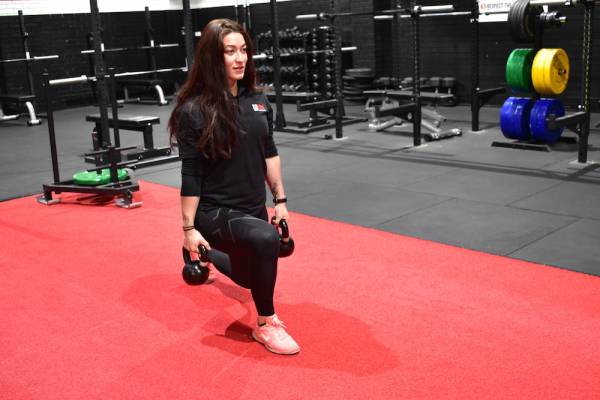
The Deadlift
While the deadlift is not a squat (it’s a hinge), and so it isn’t truly a squat replacement, it is an exercise you should absolutely continue doing if you can. Why? Because as fantastic as lunges and split squats are, they cannot compete with the deadlift for building explosive full body strength.
Many with ankle, knee, and hip injuries are able to deadlift heavy weight without pain, and continued, careful exposure to these loads even while injured means the return to training is much less troublesome than taking a complete layoff.
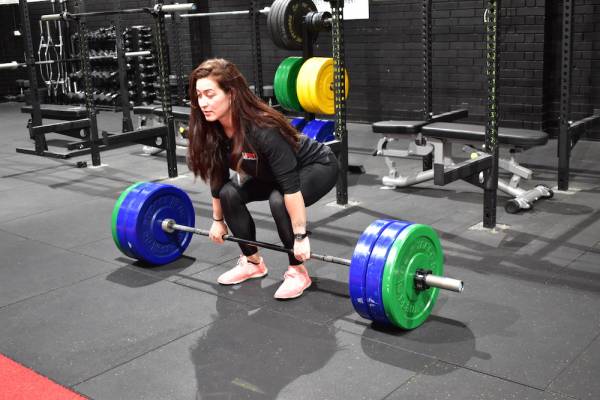
Sled Push
The sled is one of the greatest training innovations, ever. It’s brutally hard, nearly impossible to do wrong, and it doesn’t cause much lasting soreness.
Sleds are loved by coaches and hated by athletes all over the world, and if used correctly are a fantastic way to increase your lower body training volume without squatting. Consider the absolute load on the sled, then multiply it by each step you take, that volume starts to add up quickly.
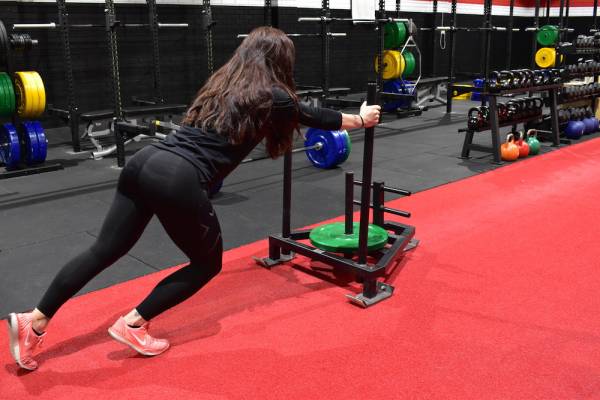
References:
1. Dahlkvist, N. J., P. Mayo, and B. B. Seedhom. “Forces during Squatting and Rising from a Deep Squat.” Engineering in Medicine 11, no. 2 (1982): 69-76. doi:10.1243/emed_jour_1982_011_019_02.
2. Schoenfeld, Brad J. “Squatting Kinematics and Kinetics and Their Application to Exercise Performance.” Journal of Strength and Conditioning Research24, no. 12 (2010): 3497-506. doi:10.1519/jsc.0b013e3181bac2d7.
3. Schoenfeld, Brad J. “The Mechanisms of Muscle Hypertrophy and Their Application to Resistance Training.” Journal of Strength and Conditioning Research24, no. 10 (2010): 2857-872. doi:10.1519/jsc.0b013e3181e840f3.
4. Isear, Jerome A., Jeff C. Erickson, and Teddy W. Worrell. “EMG Analysis of Lower Extremity Muscle Recruitment Patterns during an Unloaded Squat.” Medicine & Science in Sports & Exercise29, no. 4 (1997): 532-39. doi:10.1097/00005768-199704000-00016.


